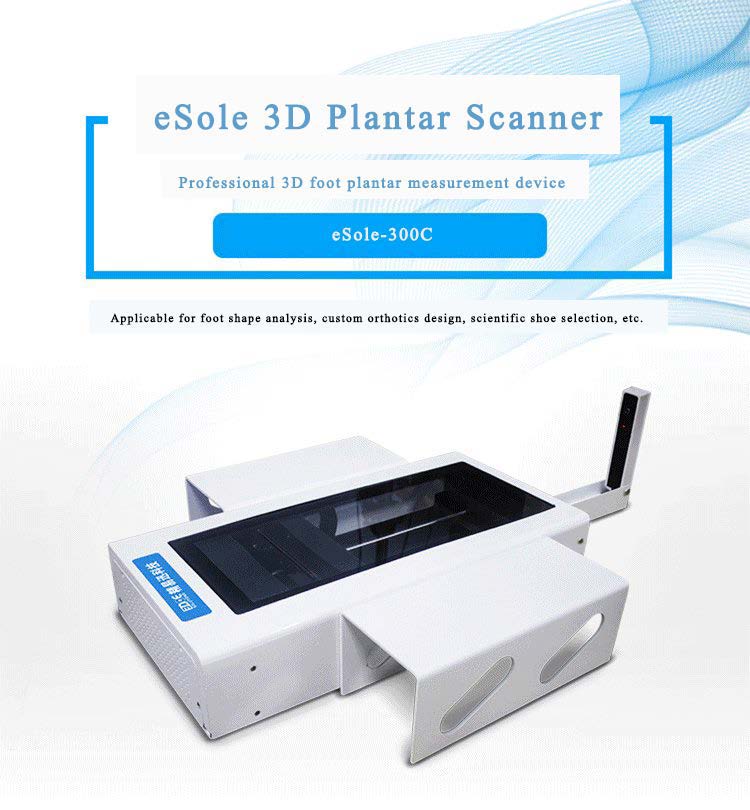Principle of Using a 3D Foot Scanner to Detect Flat Feet
Data Acquisition: Optical 3D Imaging Technology
The 3D foot scanner utilizes laser scanning technology to collect foot data in a non-contact manner.
When the laser is projected onto the surface of the foot, it forms a dense point cloud. Sensors capture the reflected light signals, accurately recording contour, curvature, and height data of various foot regions.
For example, laser scanning can complete a single foot scan within 0.1 seconds, generating a 3D digital model containing details like foot length, width, and arch height.
Data Processing and Analysis: 3D Modeling and Parameter Calculation
The raw point cloud data obtained from scanning is processed using specialized algorithms to reconstruct a high-precision 3D foot model.
The software automatically extracts key parameters such as arch height, arch angle, and plantar contact area, then compares them against a normative arch database.
For instance, by measuring the Arch Index (arch height divided by foot length), the degree of arch collapse can be quantitatively assessed: a normal arch index ranges from 0.21 to 0.26; values below 0.21 typically indicate flat feet.
Diagnostic Criteria: Arch Structure and Pressure Distribution
The primary characteristic of flat feet is the collapse of the medial arch, resulting in increased contact area between the sole and the ground.
The 3D scanner accurately identifies this via indicators such as:

Abnormal arch height: Direct vertical measurement from the arch peak to the ground plane; flat feet generally show heights less than 15mm.
Deformed arch shape: The 3D model clearly displays flattening of the arch curve and disappearance of the medial longitudinal arch.
Technological Advantages: Enhanced Precision and Efficiency
Compared to traditional manual methods, 3D scanners offer three main advantages:
Millimeter-level accuracy: Laser scanning errors are typically under 0.5mm, allowing for early detection of arch abnormalities.
Digital archiving: The 3D data supports long-term monitoring and comparison, providing quantitative references for custom orthopedic insoles.
Expanded Applications: Integration of Screening and Intervention
Scan results can be directly linked to 3D printing systems to generate personalized orthotic insoles, which improve biomechanical alignment by restoring arch support.
Clinical data shows that custom insoles based on 3D scanning can improve gait symmetry by 40% and relieve plantar pain in 82% of flat foot patients.
